Abstract
Quantitative risk assessment provides formalized scientific input to regulatory agencies that set occupational and environmental standards for potentially toxic exposures. Current practice relies heavily on statistical extrapolation from high-dose animal studies. Human data obviate the need for interspecies extrapolation and reduce the range of high-to-low dose extrapolation. This paper proposes a framework for classifying individual epidemiologic studies as to their adequacy for use in dose-response extrapolation. The framework considers five criteria: (1) a stable positive association with an adverse health outcome; (2) high overall study quality; (3) no substantial confounding; (4) quantitative exposure assessment for individuals; (5) evidence of a dose-response relationship. With these criteria, studies can be categorized as (1) suitable to serve as a basis for extrapolation; (2) inadequate to be the basis for direct extrapolation but appropriate to use for evaluating the plausibility of animal-derived risk estimates; or (3) useful only for hazard identification, not for dose-response assessment. Methods for using studies in the first two categories are briefly described. The emphasis is not on establishing rigid rules, but rather on ensuring a consistent, reliable process that makes optimum use of available data.
Full text
PDF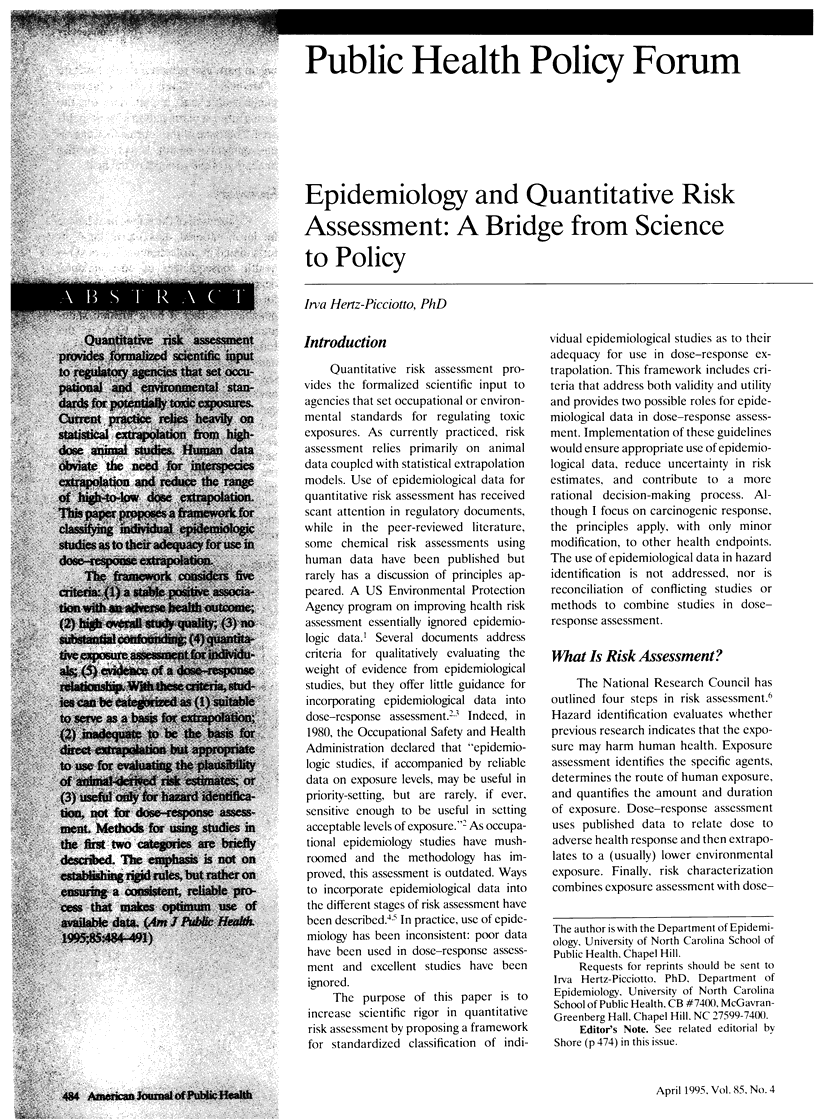
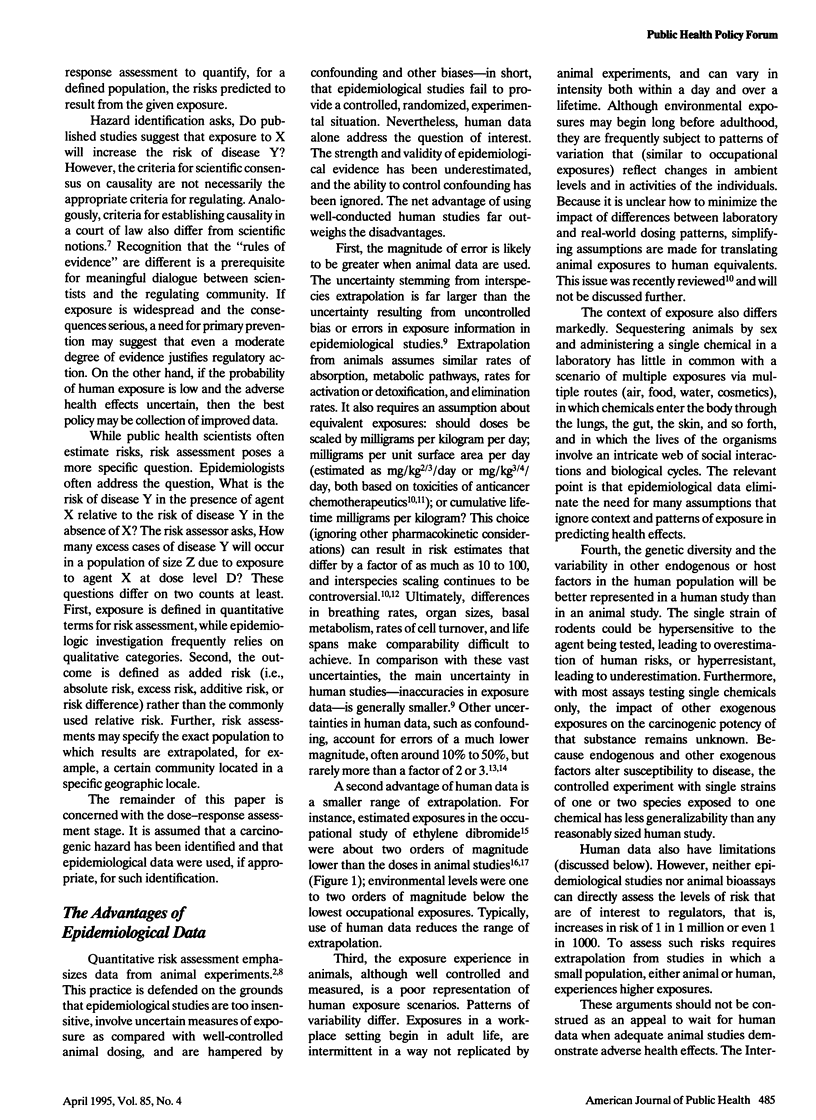
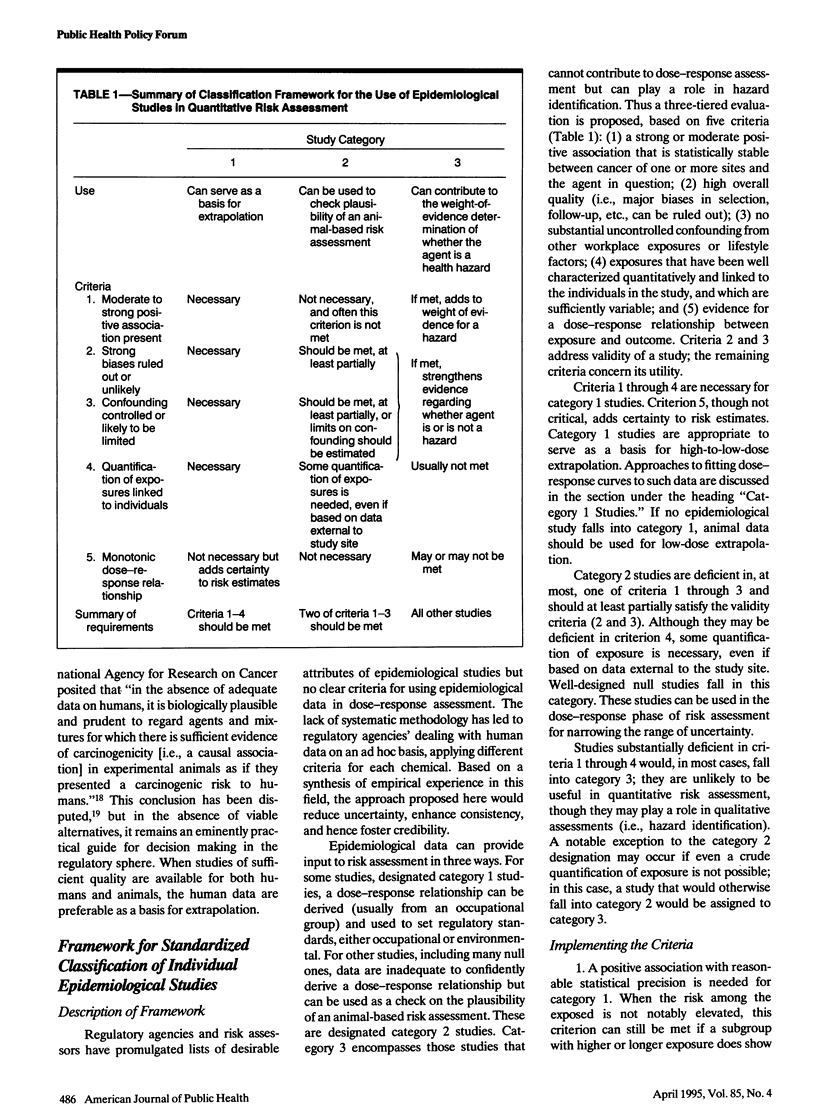

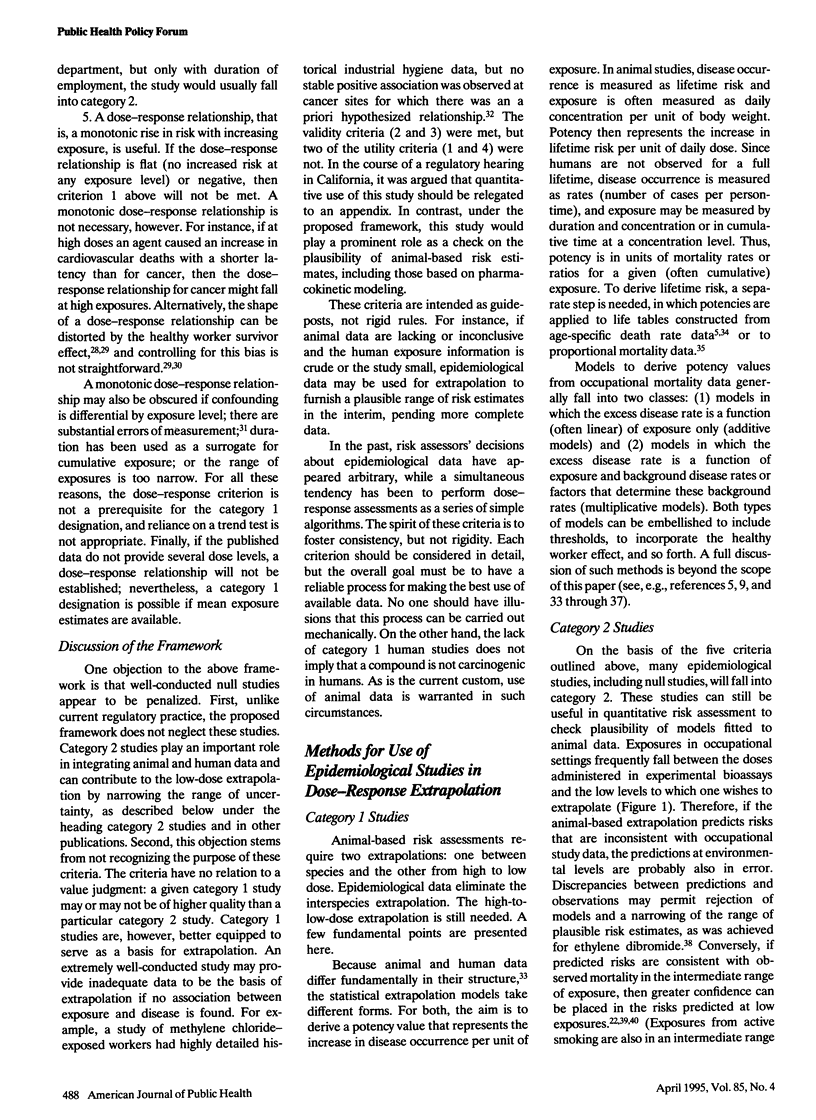
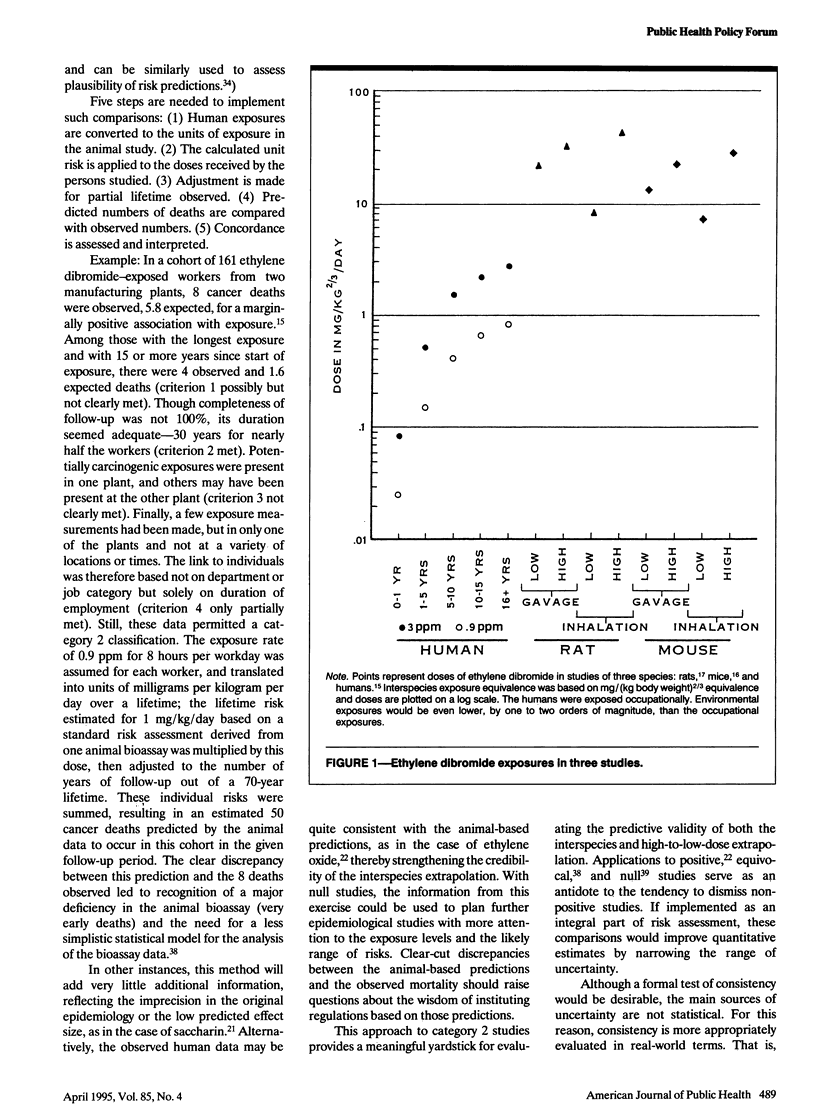
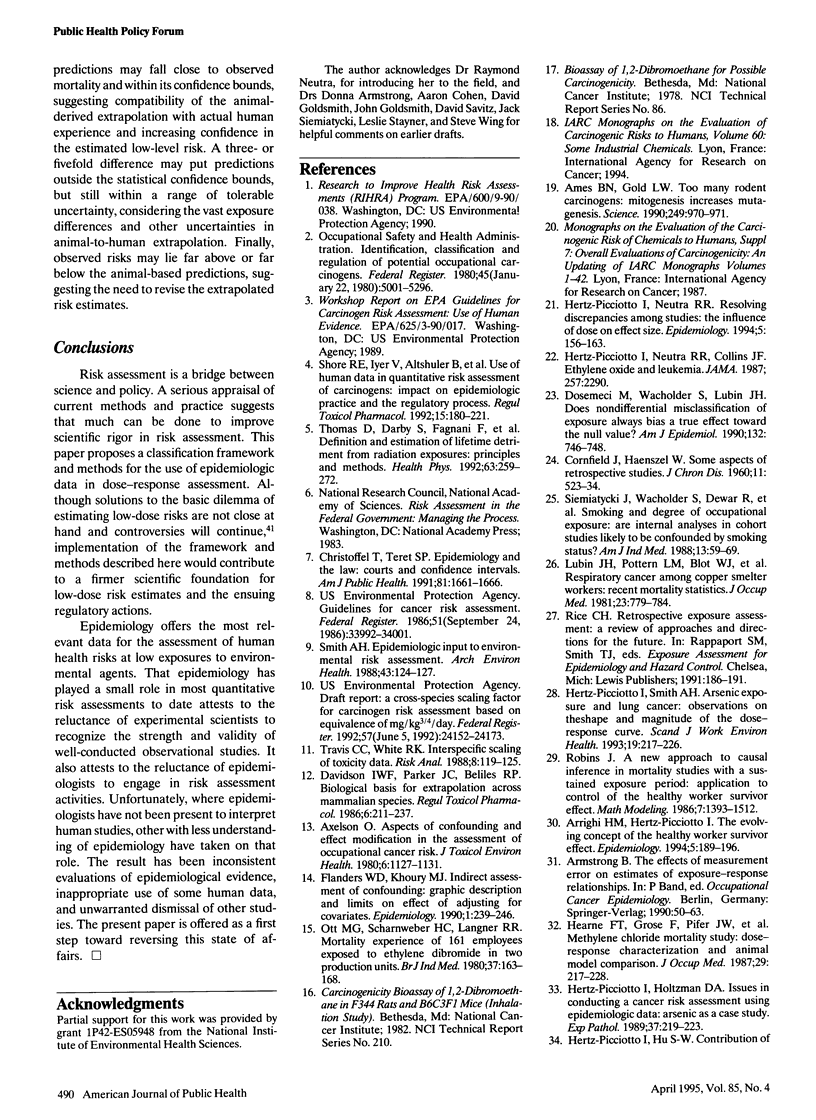
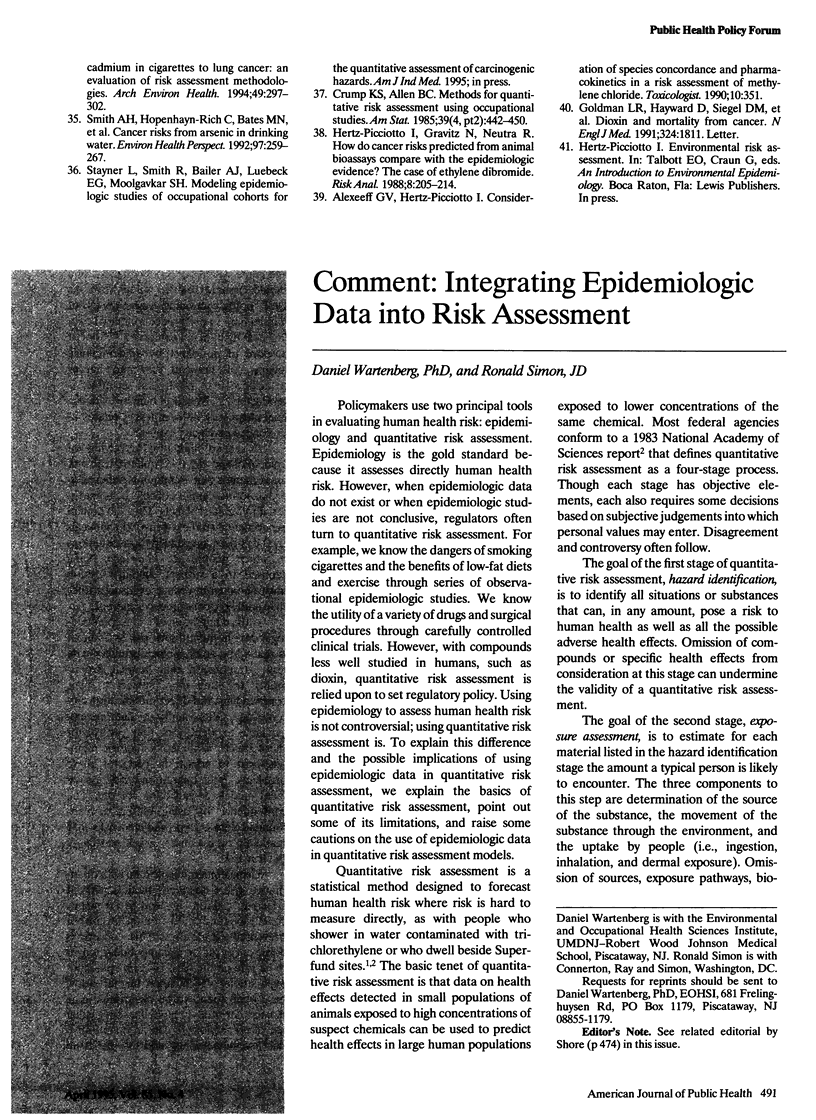
Selected References
These references are in PubMed. This may not be the complete list of references from this article.
- Ames B. N., Gold L. S. Too many rodent carcinogens: mitogenesis increases mutagenesis. Science. 1990 Aug 31;249(4972):970–971. doi: 10.1126/science.2136249. [DOI] [PubMed] [Google Scholar]
- Armstrong B. Effects of measurement errors on estimates of exposure-response relationships. Recent Results Cancer Res. 1990;120:50–63. doi: 10.1007/978-3-642-84068-5_4. [DOI] [PubMed] [Google Scholar]
- Arrighi H. M., Hertz-Picciotto I. The evolving concept of the healthy worker survivor effect. Epidemiology. 1994 Mar;5(2):189–196. doi: 10.1097/00001648-199403000-00009. [DOI] [PubMed] [Google Scholar]
- Axelson O. Aspects of confounding and effect modification in the assessment of occupational cancer risk. J Toxicol Environ Health. 1980 Sep-Nov;6(5-6):1127–1131. doi: 10.1080/15287398009529933. [DOI] [PubMed] [Google Scholar]
- CORNFIELD J., HAENSZEL W. Some aspects of retrospective studies. J Chronic Dis. 1960 May;11:523–534. doi: 10.1016/0021-9681(60)90016-3. [DOI] [PubMed] [Google Scholar]
- Christoffel T., Teret S. P. Epidemiology and the law: courts and confidence intervals. Am J Public Health. 1991 Dec;81(12):1661–1666. doi: 10.2105/ajph.81.12.1661. [DOI] [PMC free article] [PubMed] [Google Scholar]
- Davidson I. W., Parker J. C., Beliles R. P. Biological basis for extrapolation across mammalian species. Regul Toxicol Pharmacol. 1986 Sep;6(3):211–237. doi: 10.1016/0273-2300(86)90014-0. [DOI] [PubMed] [Google Scholar]
- Dosemeci M., Wacholder S., Lubin J. H. Does nondifferential misclassification of exposure always bias a true effect toward the null value? Am J Epidemiol. 1990 Oct;132(4):746–748. doi: 10.1093/oxfordjournals.aje.a115716. [DOI] [PubMed] [Google Scholar]
- Flanders W. D., Khoury M. J. Indirect assessment of confounding: graphic description and limits on effect of adjusting for covariates. Epidemiology. 1990 May;1(3):239–246. doi: 10.1097/00001648-199005000-00010. [DOI] [PubMed] [Google Scholar]
- Hearne F. T., Grose F., Pifer J. W., Friedlander B. R., Raleigh R. L. Methylene chloride mortality study: dose-response characterization and animal model comparison. J Occup Med. 1987 Mar;29(3):217–228. [PubMed] [Google Scholar]
- Hertz-Picciotto I., Gravitz N., Neutra R. How do cancer risks predicted from animal bioassays compare with the epidemiologic evidence? The case of ethylene dibromide. Risk Anal. 1988 Jun;8(2):205–214. doi: 10.1111/j.1539-6924.1988.tb01173.x. [DOI] [PubMed] [Google Scholar]
- Hertz-Picciotto I., Holtzman D. A. Issues in conducting a cancer risk assessment using epidemiologic data: arsenic as a case study. Exp Pathol. 1989;37(1-4):219–223. doi: 10.1016/s0232-1513(89)80052-0. [DOI] [PubMed] [Google Scholar]
- Hertz-Picciotto I., Neutra R. R., Collins J. F. Ethylene oxide and leukemia. JAMA. 1987 May 1;257(17):2290–2290. doi: 10.1001/jama.257.17.2290b. [DOI] [PubMed] [Google Scholar]
- Hertz-Picciotto I., Neutra R. R. Resolving discrepancies among studies: the influence of dose on effect size. Epidemiology. 1994 Mar;5(2):156–163. [PubMed] [Google Scholar]
- Hertz-Picciotto I., Smith A. H. Observations on the dose-response curve for arsenic exposure and lung cancer. Scand J Work Environ Health. 1993 Aug;19(4):217–226. doi: 10.5271/sjweh.1480. [DOI] [PubMed] [Google Scholar]
- Lubin J. H., Pottern L. M., Blot W. J., Tokudome S., Stone B. J., Fraumeni J. F., Jr Respiratory cancer among copper smelter workers: recent mortality statistics. J Occup Med. 1981 Nov;23(11):779–784. doi: 10.1097/00043764-198111000-00014. [DOI] [PubMed] [Google Scholar]
- Ott M. G., Scharnweber H. C., Langner R. R. Mortality experience of 161 employees exposed to ethylene dibromide in two production units. Br J Ind Med. 1980 May;37(2):163–168. doi: 10.1136/oem.37.2.163. [DOI] [PMC free article] [PubMed] [Google Scholar]
- Shore R. E., Iyer V., Altshuler B., Pasternack B. S. Use of human data in quantitative risk assessment of carcinogens: impact on epidemiologic practice and the regulatory process. Regul Toxicol Pharmacol. 1992 Apr;15(2 Pt 1):180–221. doi: 10.1016/0273-2300(92)90049-f. [DOI] [PubMed] [Google Scholar]
- Siemiatycki J., Wacholder S., Dewar R., Wald L., Bégin D., Richardson L., Rosenman K., Gérin M. Smoking and degree of occupational exposure: are internal analyses in cohort studies likely to be confounded by smoking status? Am J Ind Med. 1988;13(1):59–69. doi: 10.1002/ajim.4700130105. [DOI] [PubMed] [Google Scholar]
- Smith A. H. Epidemiologic input to environmental risk assessment. Arch Environ Health. 1988 Mar-Apr;43(2):124–129. doi: 10.1080/00039896.1988.9935838. [DOI] [PubMed] [Google Scholar]
- Smith A. H., Hopenhayn-Rich C., Bates M. N., Goeden H. M., Hertz-Picciotto I., Duggan H. M., Wood R., Kosnett M. J., Smith M. T. Cancer risks from arsenic in drinking water. Environ Health Perspect. 1992 Jul;97:259–267. doi: 10.1289/ehp.9297259. [DOI] [PMC free article] [PubMed] [Google Scholar]
- Thomas D., Darby S., Fagnani F., Hubert P., Vaeth M., Weiss K. Definition and estimation of lifetime detriment from radiation exposures: principles and methods. Health Phys. 1992 Sep;63(3):259–272. doi: 10.1097/00004032-199209000-00001. [DOI] [PubMed] [Google Scholar]
- Travis C. C., White R. K. Interspecific scaling of toxicity data. Risk Anal. 1988 Mar;8(1):119–125. doi: 10.1111/j.1539-6924.1988.tb01158.x. [DOI] [PubMed] [Google Scholar]


